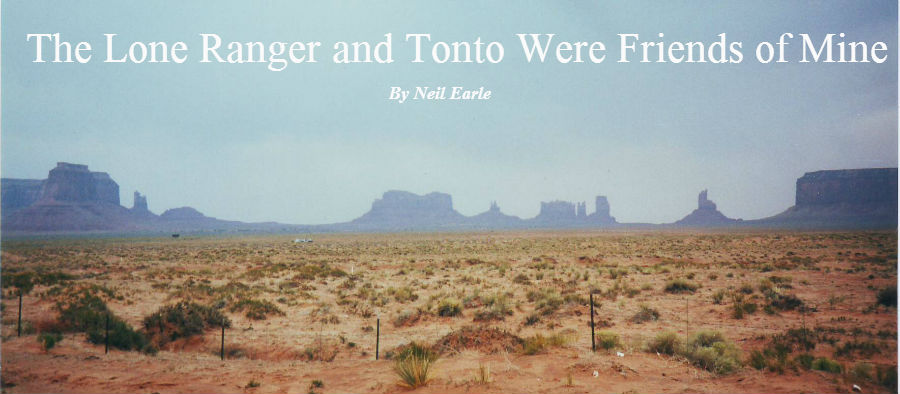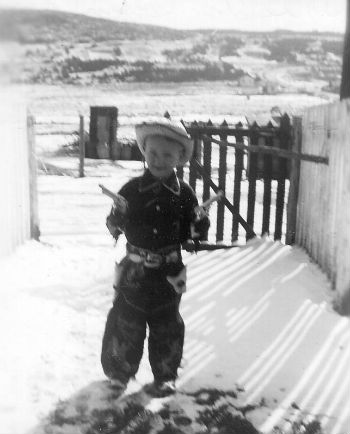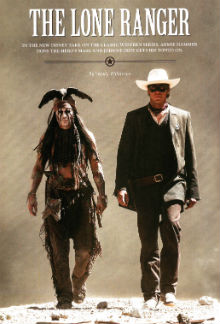 Monument Valley: A place of the spirit for the Navaho and Western mythology for Hollywood.
Monument Valley: A place of the spirit for the Navaho and Western mythology for Hollywood. Monument Valley: A place of the spirit for the Navaho and Western mythology for Hollywood.
Monument Valley: A place of the spirit for the Navaho and Western mythology for Hollywood.“All right, all right, all right.”
The 86th Academy Awards have come and gone and people felt justice was done – Best Picture and Best Actor/Actress seemed to please most people.
I noticed that “The Lone Ranger and Tonto” were only nominated for one award, Best Makeup, which was at least very deserving.
In the larger scheme of things, however, I am right to feel slightly indignant (with my tongue set partly in my cheek) that not only was the movie considered to have bombed, but it didn’t even make it to the outer limits of Best Picture consideration. I say this with at last some history in all this Western movie business and Lone Ranger fandom. This is almost a cliché but the Lone Ranger (LR) and Tonto connected with me and millions of other kids when I was old enough to sit on mom’s floor reading juvenile fiction based on the comics.
 Cowboy Pastor Neil – fastest gun in his backyard.
Cowboy Pastor Neil – fastest gun in his backyard.The original Lone Ranger debuted as a children’s radio show on WXYZ Detroit 85 or so years ago and from 1949 to 1957 became a TV sensation for our age group. This series starred the unforgettable Clayton Moore as the masked rider of the plains and the Canadian Iroquois Jay Silverheels as Tonto. We kids were proud of that north of the 49th Parallel – “Hey, Tonto is Canadian!” What fun to rush home after school to catch the weekly installments. That’s right, the only TV on our lane (too underdeveloped for streets) was in mom and dad’s house.
What Hollywood types call “the back story” of LR has coherence, even at the comic book level. A band of Texas Rangers are ambushed with only one survivor, John Reid, who was left for dead, that one casualty nursed back to health by Tonto, he then wears a mask the better to seek vengeance on the ambushers and along the way does a lot of good “bringing law and order to the early West.”
Add to that elegance of presentation a superb opening sequence by a stentorian-voiced 1940s and 1950s announcer accompanied by the William Tell Overture playing in the background and you have a pop-culture winner. (There is the old joke that the definition of a snob is someone who listens to the William Tell Overture and doesn’t think of the Lone Rnager, but I won’t mention it!).
But this is the 21st Century and straight-out heroism doesn’t play well unless the hero or heroine has the requisite psycho-social baggage – “Superman Returns” showed that the man of steel had left town and Lois Lane had moved on to get married; Christian Bale’s Batman plays the dark vigilante so intensely that he almost deserves his creeping outlaw status.
By the great Silver’s shiny mane I do declare the critics were out to lunch on this one. “Disney billed it as a full-tilt action-packed buddy comedy” according to Cowboys and Indian magazine. The critics missed the signals – Jerry Bruckheimer of the Pirates of the Caribbean franchise was the producer. Missing too was the partial homage to the classic John Ford Western, the intentionality of the locale – Monument Valley. Add to this massive train derailments worthy of Clint Eastwood and there’s plenty of visual action.

In this 2013 version of the Lone Ranger, the training and preparation – “the Plan Stage” of any movie according to John Truby – sees the masked man at time descend into bathos if not outright comedy. He almost stresses you out as much as The Green Lantern in his “will he ever get his act together?” mentality.
But the final scene with LR riding on top of a train to get the bad guys – yes, on top of a train, mind you! – this can get the blood stirring for those “thrilling days of yesteryear.” My heart stirred ever so slightly as the William Tell Overture finally made its appearance and for a minute I’m back in my old living room again with all my buddies, transfixed. Mom always said these were the best days of our lives.
I’m willing to overlook the stubble on Armie Hammer’s chin for the under-40 set to relate to. Altogether he looked like a contender – visually “together” with white hat and black mask. Not Clayton Moore but Son of Clayton Moore. Johnny Depp’s caked on war paint and ironic persona were a nod to the times. All that could be accommodated to our dream-state tastes considering Johnny Depp got initiated by the Commanches in a small ceremony and, according to Bruckheimer, Hammer had learned to ride as well as any stuntman.
“Hi-yo Silver!”
Why then did the movie fare so poorly?
What can a Christian movie buff and sometime critic say to all this? Christians at their best are all about redemption so, let me cast a wide lasso on this one. Oh, yes, I have it now. LR 2013 reminds me of what a fellow pastor stated years ago when our church was being decimated and morale suffered: “Resurrections are hard to pull off,” opined my boss at the time. For all the effort and even with the protagonists giving their all against the sheltering sky, the Lone Ranger is one of those compelling giants of the popular culture who is hard to duplicate, especially the first time out. The cast sensed this. Hammer sounded authentically philosophical in his reflections to Cowboys and Indians magazine: “This country was the last frontier and to be able to spend six months on the Western frontier finding a sense of self-worth and exploration, was an experience.”
“Self-worth and exploration.” Hmmm. Something clearly got through to the star which I like to think bodes well for 26-year-old Hammer, who is, by the way, the grandson of oil tycoon and art patron Armand Hammer.
Like the Bible for Christians, the American West pulls at you in a mystical sort of way. That area of Arizona is sacred to the Navaho, they even came to bless the set, reported Bruckheimer. They didn’t have to convince me, with a full repertoire of 1950s Westerns to draw upon. So the echoes of something transcendent recur – the psycho-spiritual effects of Monument Valley where I led a bus load of church-goers in 2002, the shamanistic overtones of Johnny Depp’s Tonto, the evocative way he greeted Reid as “Spirit Walker…the one who has been to the other side and returned,” and how stupefied the cast and crew were when Hammer did his first rearing-back sequence on Silver – these are slight strands of connection to…something bigger than ourselves.
Self-referential to the Western myth, the Lone Ranger story and to its own self, yes, but also bumping up against a bigger story of a man supposed to be dead but returned. The 2013 version reminds us that John Reid comes back from the other side, seemingly, a Resurrection Figure in a way, to become the incarnation of justice to our childlike minds, the Lone Ranger. Dawn Moore, Clayton’ Moore’s daughter, continues to receive her father’s fan mail – especially from police officers, firefighters, and teachers,” she told Cowboys and Indians. “These were the young viewers who decided to become protectors in some capacity because of my father’s role on television…it is very powerful stuff.”
Perhaps. The 2013 incarnation showed that the myth of the Old West which has to be seen to be believed and, as the Lakota say, believed in order to be seen – this makes a potent recipe for coming out of yourself for two hours. And dreaming bigger thoughts.
And isn’t that what the movies are all about?